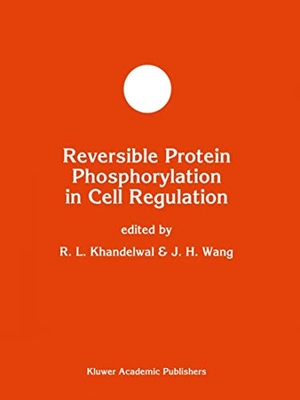
Reversible Protein Phosphorylation in Cell Regulation
- Springer US
- 1994
- Gebunden
- 338 Seiten
- ISBN 9780792326373
2 During our formative years with Dr. Krebs at Davis, ed until the ER becomes substantially depleted of Ca +. California, we (c. and M. Brostrom) were imbued with For example, acute exposure of GH3 pituitary cells to 2 2 our continuing interest in the roles of Ca+ and cAMP in Ca+ ionophore A23187 or EGTA has been found to re biological control mechanisms. We remember our time sult in the inhibition of amino acid incorporation. disap with Dr. Krebs with great affection both for his intense pearance of polysomal content with accumulation of interest and high standards in science and for his great monosomes and
Mehr
Weniger
zzgl. Versand
in Kürze